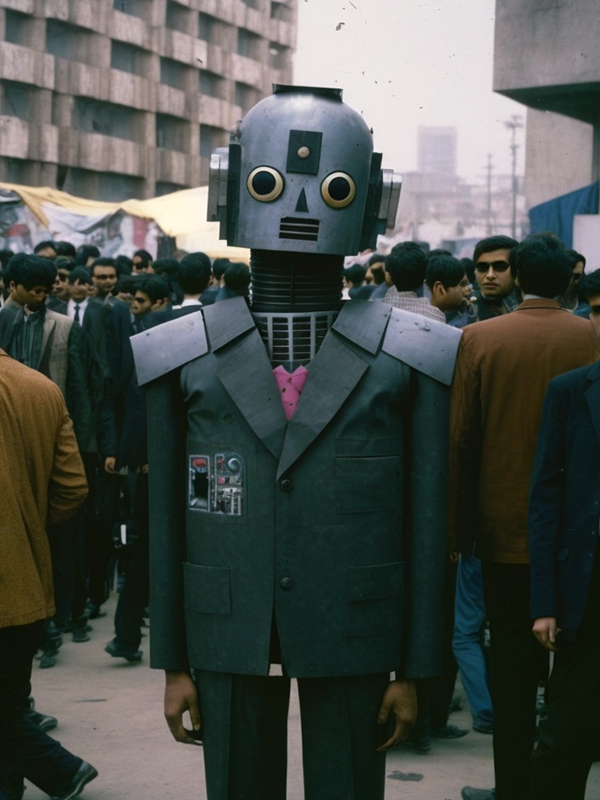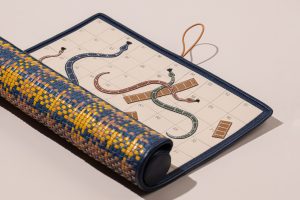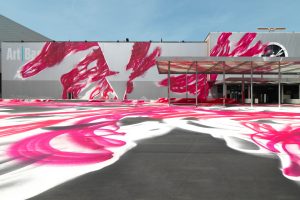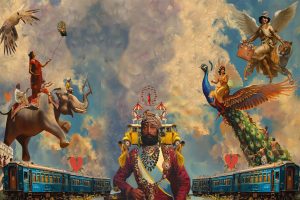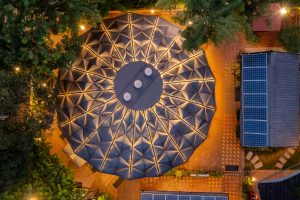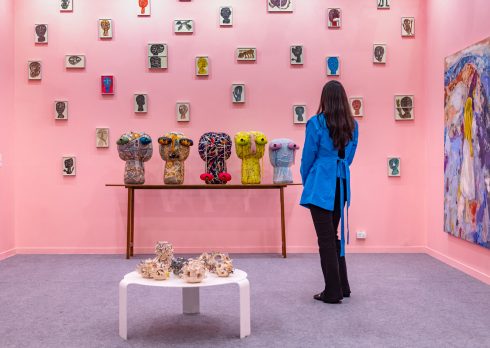The Ethics Of AI Art – An Insight Into The Indian Landscape
- 10 May '23
- 5:01 pm by Manisha AR
From augmented reality filters to voice commands – artificial intelligence has come a long way. However, the discourse around it has not. Every time an AI tool or software takes over a mundane task, the debate is always polarizing. We either love how easily it can accomplish a task or hate that it detaches the end user from the traditional definition of labour. In other words, it doesn’t feel human. The application of artificial intelligence in many fields has received a similar reaction, particularly in art. There is concern over privacy, the ethics of access, and the potential to misinform among other perils. We speak with digital creators Prateek Arora and Gokul Pillai on how they engage with these ideas in their work, and the founder of Method Gallery, Sahil Arora on how much this matters when choosing to show work in a gallery space.
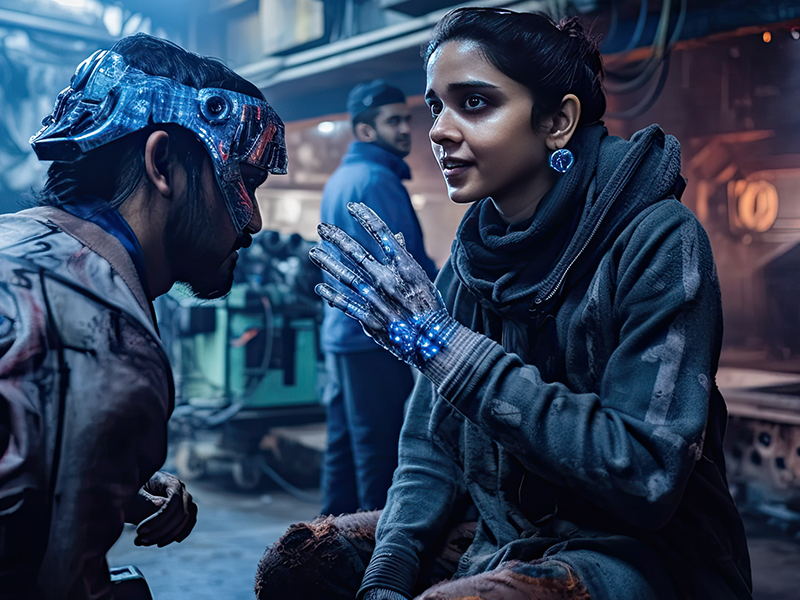
What is the difference between generative artificial intelligence and machine learning?
Before we get into the debate, it’s important to understand some key distinctions in art that uses artificial intelligence or AI. Just like fine arts, AI itself is a vast field with many applications that enable machines to act, reason, sense, or adapt themselves to act like humans.
Take for example machine learning or in this case traditional AI which allows computers to learn without being programmed explicitly. An algorithm– the same one that Netflix or Spotify uses to make recommendations– is one type of machine learning. Another type of AI is generative which picks up patterns from existing data to generate more data such as images, text, music, videos etc. It’s essentially a more complex application because it not only learns patterns but it also generates a unique output from that data.
Currently, the most common tools or applications being used to make art usually fall under the umbrella of Machine Learning and/or Generative AI. Examples of Generative AI applications that have become buzzwords include Midjourney or DALL.E. Meanwhile, with machine-learning tools like Shogun or Weka that use languages like Java, Python and C++, artists can create a process by themselves (or through collaboration) that gets machines to extract relevant information from a large pool of data and use it for a specific purpose.
Cecilie Waagner Falkenstrøm’s work as part of ‘Mindscapes’ at the Museum of Art & Photography in Bangalore, is an example of art made using machine learning tools. Her work is a result of parsing through several data sources– including the MAP archives– to highlight the unseen labour of content moderators who work tirelessly to keep the internet a safe place. While the subject is timely and relevant to a larger audience, the approach by the Wellcome Trust to include newer mediums of artmaking ensures that the theme is explored from new perspectives.
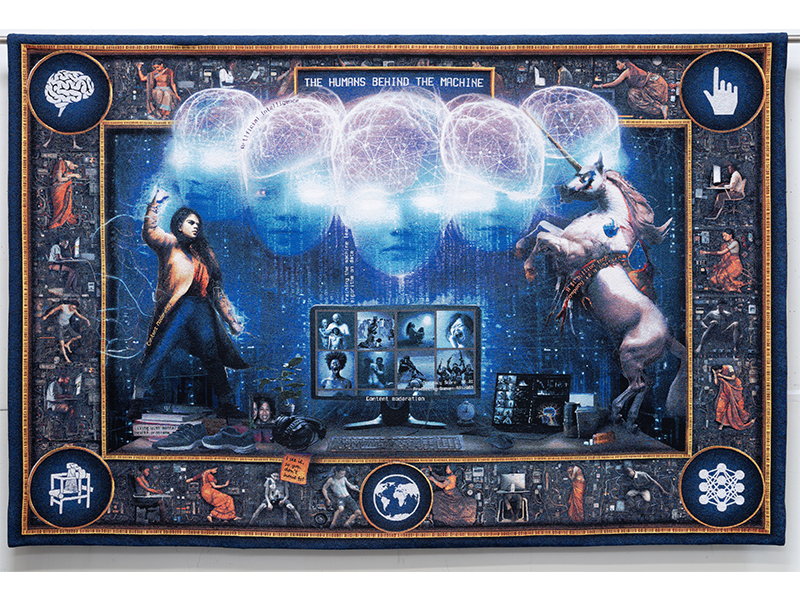
Falkenstrøm’s art studio, ARTificial Mind, uses machine learning, blockchain (the technology behind virtual currencies), hacking, and other innovative technology to produce interactive work. Her piece titled ‘I See It, So You Don’t Have To’ is a large tapestry with an AI generated design that has been woven onto a jacquard loom. In an interview for Wellcome Trust, she explains that the tapestry, “turns roles and pays homage to invisible content moderators who are working hard to keep our tech industry running which we normally won’t notice in our daily lives.” This is one way to integrate AI tools into art-making and the kind we often see at art fairs, museums and biennales. However, there is a steady increase in viewing art online–through websites, virtual platforms and social media sites such as Instagram that create artworks that are entirely digital with no physical outputs.
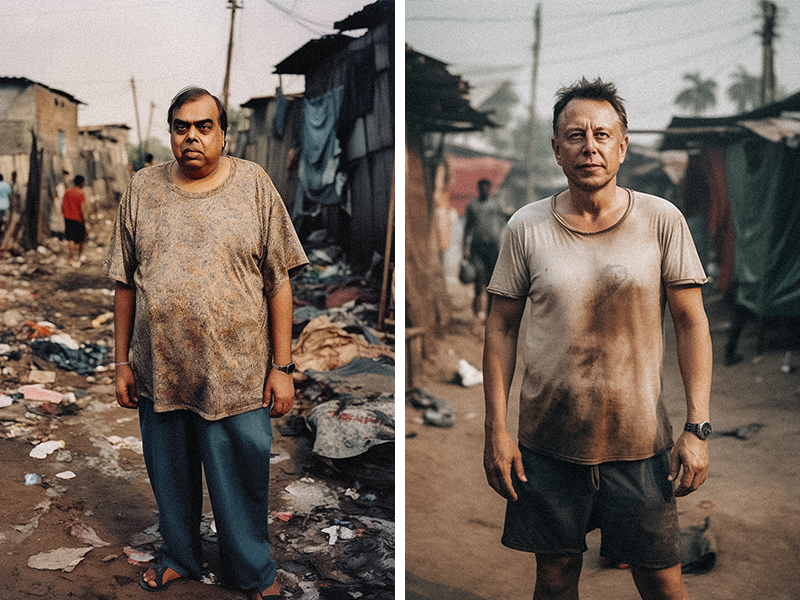
How can you distinguish between reality and AI-generated content when it comes to art?
In the virtual world, the possibilities to create are endless and fairly complex because they don’t always tie into tangible outcomes like a painting, a physical object or print. With digital art or AI-generated art, all of the art appreciation is based on experience rather than observing tactile objects for scale, color or dimensions. There is a distinction between digital art and AI-generated art because the latter is 3 dimensional and relies on interactions rather than passive observation.
With generative AI, artists often develop a prompt or search query as an experiment in the hopes of generating something unusual or recreating something familiar. This new work or output could take the form of an image, text or video content. Examples of these can be found on Midjourney, ChatGPT or DALL.E. All of these use existing data or information—images online, newspaper headlines, blogs, instagram captions, facebook images etc–– to generate new content.
While this is an exciting development, the biggest concern is use of these tools to create misinformation or mislead people. For example creating paintings of Teddy Bears in the style of Salvador Dali or Vincent Van Gogh. Similarly, artworks can be generated in the styles of popular living artists too–all without their consent.
“I enjoy caricature works and political commentaries. Inspired, I try to do some political commentaries as well through my AI images in a very subtle way,” says digital artist and photographer Gokul Pillai who has amassed close to 50K followers. His series titled ‘Slumdog Millionaire,” are a series of street-photography style portraits of wealthy businessmen Mukesh Ambani, Mark Zuckerberg, Jeff Bezos, and Elon Musk are depicted as if they have been struck by poverty.
One of the hardest questions that the AI art world is grappling with is the ethics of creating duplicitous worlds and presenting them in parallel to real ones. In an era of misinformation and propaganda, speculative AI imagery doesn’t help the cause. Pillai, himself is aware of this and often plays on this subject in his works. “I do agree that AI images have the potential to spread misinformation,” which is why he ensures that all his images have been tagged as ‘AI Generated’ to avoid confusion. He adds “I use these tools only as a creative medium, and for me, the fun of it is when people know that it’s not real but can still enjoy it.”
Prateek Arora who identifies as a digital creator on Instagram with a following of over 40K has taken the spotlight for his images of Bollywood using robots on set, glimpses of sci-fi and horror infused Indian cinema in the 70 and 80s. “I must admit the output of AI-generated art can look and feel very real which makes it very susceptible to misinforming people,” Arora tells DP. He goes on to say, “many of us are already weary of information online, particularly when it comes to Whatsapp forwards and so on,” he explains that there is already a level of caution among people accessing information online.
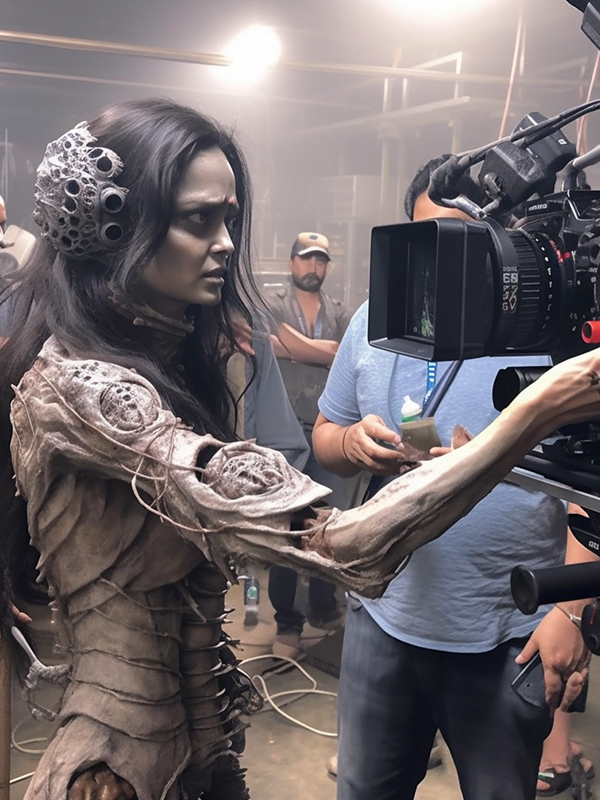
What makes AI art different from all the other digital art that exists online?
Sahil Arora, Founder of Method Gallery tells Design Pataki, “I think currently many artists are using AI as tools to experiment and refine their ideas and this, in my opinion, will continue to be a strong use case for the technology.” While artists haven’t yet presented AI based works for exhibiting with Method Gallery, they are open to the possibility as long as it aligns with their visions for the space. They are interested in works that are Post-Contemporary, New Age, and Urban. We also asked him to elaborate on any specifics he would consider when showcasing works that intersect with such a nascent technology. “Besides the general criteria for the art of theme, style, and a deep sense of audience engagement, the artist needs to be committed to their practice and instill faith of a long term commitment to their craft,” he adds.
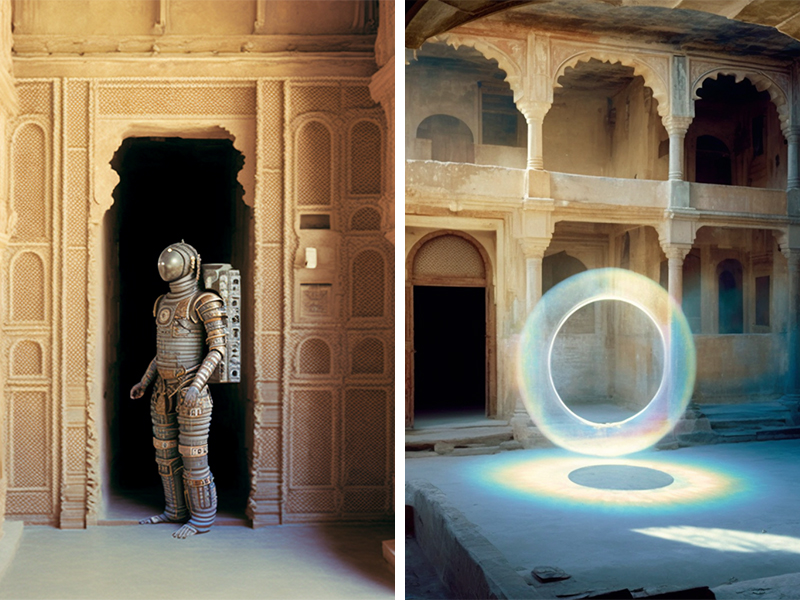
In researching this piece, the editorial team considered several artists using different types of technology in their art. Much like Sahil Arora, our team too was looking for artists who had a deep sense of audience engagement and were telling their viewers a story or touching on larger topics that can’t easily be done through other art mediums.
Prateek Arora is also a screenwriter, and Vice President, Development of Bang Bang Mediacorp. He uses the term ‘culture hacking’ to describe his journey from writer to digital creator. His Instagram page is full of global pop-culture references in the Indian context. A blend of nostalgia meets Indian sci-fi horror, Arora’s work on Instagram continues to be deeply interested in envisioning a world where science-fiction, horror, and surrealism have blended into contemporary India. His work examines the impact of popular culture on memory, identity, and tech progress as an index of cultural change.
Gokul Pillai’s work is deeply inspired by street photography with a hint of fantasy and retro-futurism. His page is largely portraits of both famous and everyday people in different worlds. A close inspection can confirm whether they are real or set in an artificial reality.
Pillai is more interested in the human emotions of these images, Arora is often recreating cinematic history. By developing images of aliens on the streets of India, and showcasing technological inventions around Indian architectural buildings, he recreates and reprograms our visual histories.
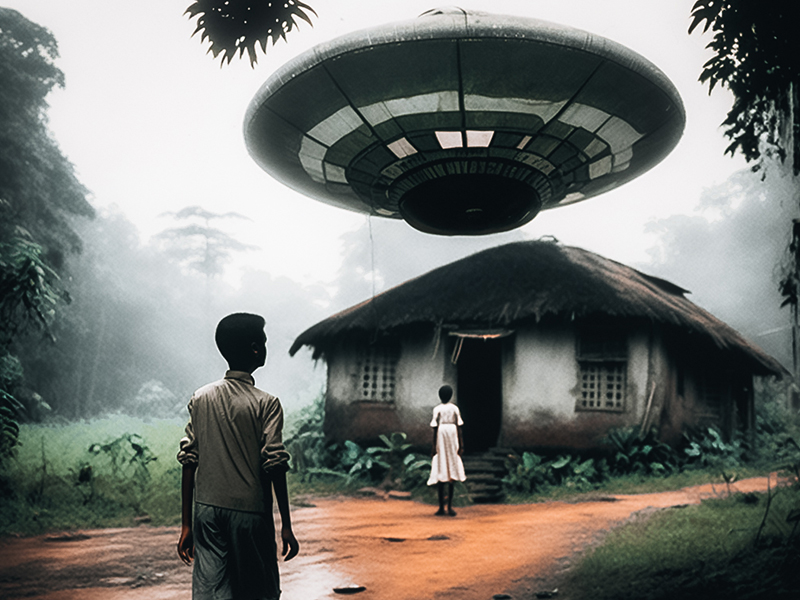
Do the ethics of using archival data really matter when it comes to creating art?
This question does not have one direct answer. It varies depending on how much an individual understands the workings of AI and how deeply technology has been integrated into our lives. While the power of AI seems limitless and the labour feels hidden, it continues to ride the novelty wave like NFTs and digital art; it is complex and nuanced for everyone-including those working with it. All the artists we spoke to don’t deny the importance of data privacy and strong regulations, however that isn’t their main worry. Instead they are more interested in creating a voice that is unique to the Indian landscape and preserving it before it gets lost to the internet like most new things.
The silver lining to the dark cloud is the ethical use of unregulated data in AI tools and softwares is that the more we work with it conscientiously, the better we understand it. This principle is the key driver behind making AI tools and machine learning softwares open source and accessible to all. It is also why social media is an excellent source for discovering new artists and art.
More recently, the EU has proposed more comprehensive regulations for AI generated content requiring increased transparency from AI tools that generate image and text and will require them to disclose any copyright material used— a positive measure. While a majority of these regulations are largely in place to protect minors and criminal use, they have not yet been adopted to specifically protect artist copyrights in the digital space. This nuanced understanding and application will only come with increased use and discussions around the use of these tools and their application in the real-world.
There is no silver bullet and neither is the discussion on adapting AI to our lives supposed to be polarizing. Instead, it’s about exploring the endless possibilities that come with AI and how they can transform our understanding of the world that we live in.
